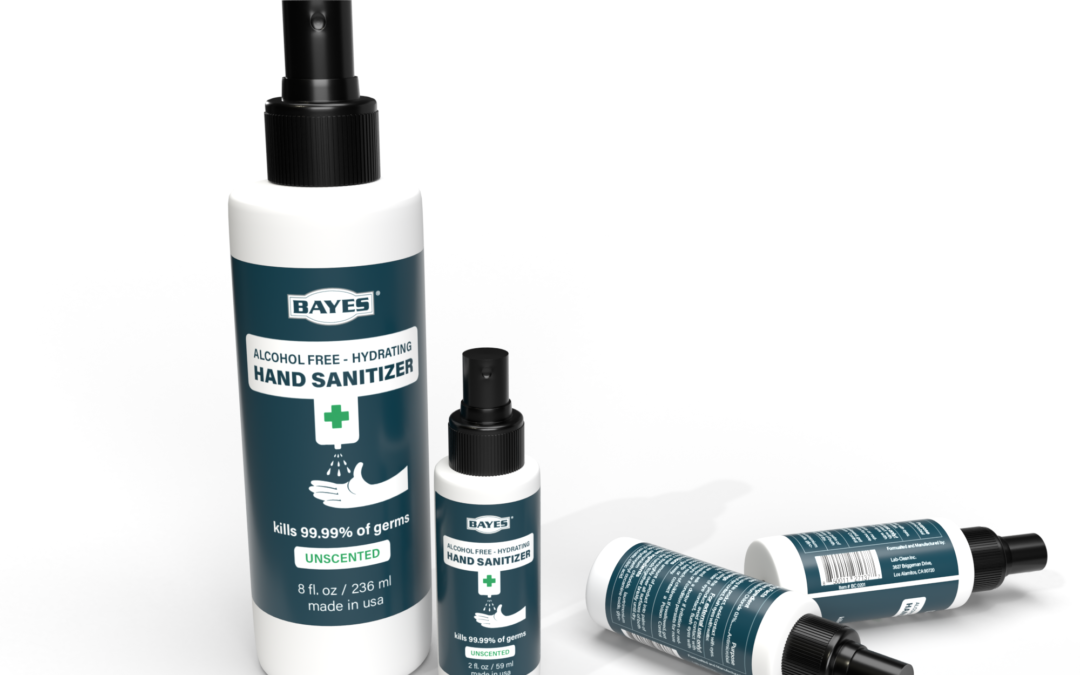As coronavirus cases continue to rise in the US and worldwide, you might have some questions about how you can protect yourself. Hand sanitizer is one of the most convenient and on-the-go methods of cleaning your hands. So, you might be wondering whether hand sanitizers really kill coronavirus.
It is worth noting that the CDC (Centers for Disease Control and Prevention) recommends that you wash your hands with soap and water as it is the most effective way of removing bacteria, dirt, and viruses from your hands. However, remember that this method of washing hands is not always possible or convenient. And a hand sanitizer is a good alternative.
However, note that using a hand sanitizer as an alternative to water and soap requires deciding between those products that have alcohol as the key or active ingredient and those products that do not. Nowadays, hand sanitizer is a common product in many purses. This is because its use has skyrocketed during the coronavirus.
What is an Alcohol-Free Hand Sanitizer?
Rather than using alcohol-based hand sanitizers, which can be flammable and harsh on your skin, an alcohol-free hand sanitizer is excellent as it uses a different active ingredient for killing germs. Lab-Clean Inc and Specialized Topicals manufacture alcohol-free hand sanitizers that use benzalkonium chloride as an active ingredient.
How do Hand Sanitizers Work?
It is no secret that hand sanitizers are an easy and convenient way to quickly clean your hands when water and soap are not available. Usually used on the go, alcohol-free hand sanitizers contain benzalkonium chloride, quaternary ammonium to kill bacteria and viruses on your hands.
Criteria
It is worth noting that FDA approval is usually not an endorsement of the effectiveness of an ingredient. It just verifies that the ingredients are safe to use. Remember that effectiveness of an ingredient depends on many factors, like the context in which you are using the product and the type of microorganisms or dirt you are trying to remove.
Did you know that food service workers, health care workers, and the public are standard classifications used to determine effectiveness? Note that chemicals react very differently depending on the composition of the microorganism or dirt encountered within each of these classifications.
Foodservice workers, for example, often come in contact with fecal bacteria and many intestinal viruses, like Norovirus.
The Function of Alcohol-Free Hand Sanitizers
You can use alcohol-free hand sanitizers to clean your hands when water and soap are not readily available. This is because you do not need to rinse it away, making it convenient. They are also easily available in small bottles that you can store in your purse or pocket and use in public environments. Alcohol-free sanitizers are increasing in popularity as alcohol-based sanitizers can dry the skin.
If you are looking to supplement your manufacturing capacity, you can hire Lab-Clean Inc. for contract manufacturing of products, like alcohol-free hand sanitizers.
Properties
There are many properties of non-alcohol hand sanitizers that often work in their favor and encourage their use. Alcohol-free hand sanitizers are non-irritating, non-drying, and remain on your skin much longer before evaporating compared to alcohol-based hand sanitizers.
On the other hand, alcohol-based sanitizers tend to have a drying effect on the skin. Keep in mind that overly dry skin may lead to painful cracking that also produces a conducive environment for germs and bacteria to enter your body.
This is why consistent use of alcohol-based hand sanitizers can irritate your skin and cause you to use them less frequently. Also, alcohol ingredients tend to evaporate quickly, and this limits their effectiveness to a shorter period of time than non-alcohol hand sanitizers.
How Much Alcohol-Free Hand Sanitizer Should You Use?
While the amount of alcohol-free hand sanitizer will depend on the size of the hands, note that it must be enough to cover both sides of your hands fully and should also cover the area between your fingers. In most cases, the amount can be from .75 ml to 1.2 ml (about ¼ teaspoon or the size of a dime).
After you have dispensed the hand sanitizer in your palm, gently rub both your hands together. Also, rub the top of your hands and between your fingers until the sanitizer has evaporated. Do not wipe the sanitizer off before it has dried.
When Should You Use Alcohol-Free Hand Sanitizer?
According to the CDC, you should only use a hand sanitizer when water and soap are not available. Ideally, you should not use a hand sanitizer with dirty or greasy hands — try to find antibacterial soap and water instead.
Also, hand sanitizers can serve an important purpose in clinics and hospitals: If you are visiting somebody in the hospital, using alcohol-free hand sanitizer after the visit can help prevent the spread of the virus.


Recent Comments